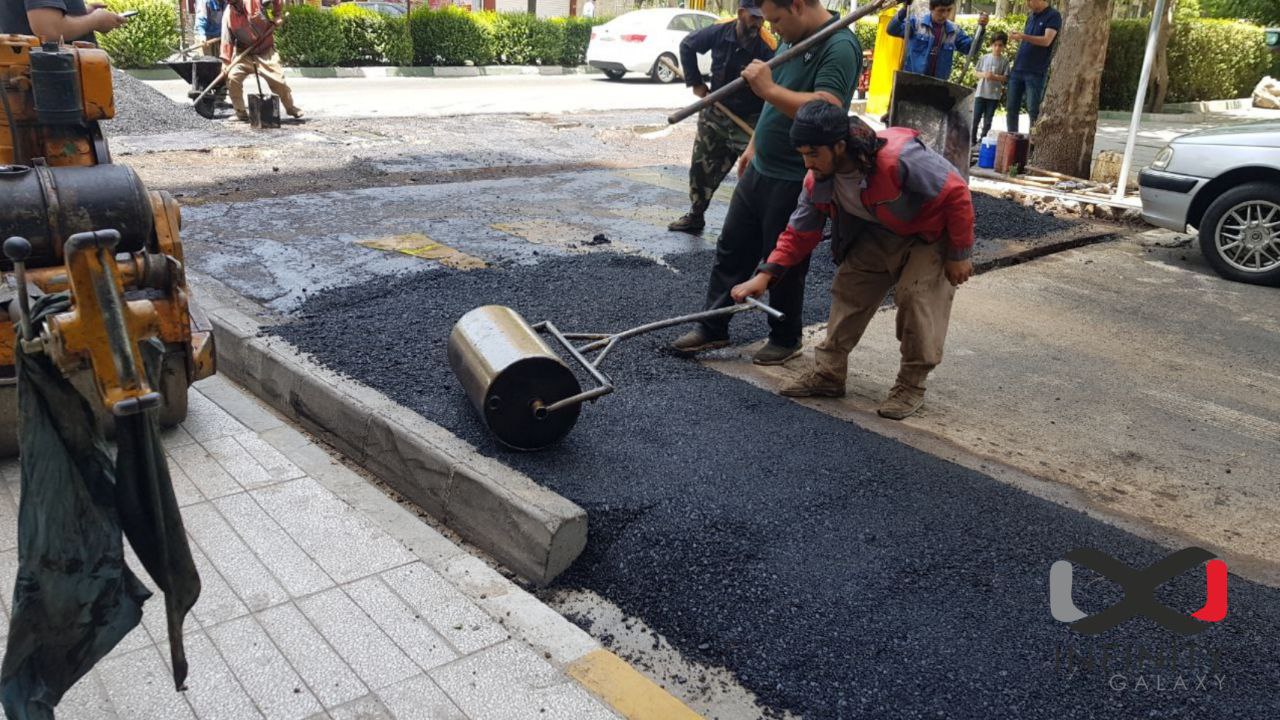Hot Mix Asphalt Paving: Your Entrance to Premium Angled Parking Solutions
Hot Mix Asphalt Paving: Your Entrance to Premium Angled Parking Solutions
Blog Article
Opening the Keys of Hot Mix Asphalt Modern Technology
Checking out the depths of hot mix asphalt innovation uncovers a globe where thorough processes and exact solutions merge to form our roadways and facilities. The fusion of aggregates, fillers, and binders isn't merely a building task yet a tactical orchestration of resilience and performance. As we peer into the detailed dancing of components, a tapestry of durability and sustainability unfolds. But what exists below this surface area of asphaltic mastery, and what tricks wait to be introduced in the realm of leading advancements?
Value of Hot Mix Asphalt
Hot Mix Asphalt plays a critical function in contemporary framework growth as a result of its durability and cost-effectiveness. As the most commonly utilized leading product for roads, freeways, and car parking lots, Warm Mix Asphalt supplies a variety of advantages that add to its relevance in building and construction jobs. One crucial benefit is its ability to stand up to rush hour loads and rough climate condition, supplying a trustworthy and lasting surface for transport networks. Additionally, Hot Mix Asphalt is affordable in both initial building and construction and long-term maintenance, making it a preferred option for lots of infrastructure jobs.
The toughness of Hot Mix Asphalt stems from its structure, which consists of accumulations, binder, and filler materials that are meticulously selected and mixed to satisfy details efficiency requirements. In general, the relevance of Warm Mix Asphalt in framework advancement can not be downplayed, as it proceeds to be a foundation of modern-day construction methods.
Components of Asphalt Mixes
The composition of asphalt mixes contains thoroughly chosen accumulations, binder, and filler materials that are critical for accomplishing details performance requirements. Aggregates are the key component of asphalt mixes, giving strength and security. These aggregates can be natural, such as gravel or crushed rock, or synthetic, like recycled products from old sidewalks. The binder, typically asphalt or asphalt concrete, holds the accumulations together and provides flexibility and toughness to the mix. The choice of the binder is crucial as it directly influences the mix's performance in different climate conditions. Fillers, such as moisturized lime or Portland cement, are utilized to improve the mix's workability and aging resistance. Angled Parking.
The combination and proportion of these parts play a substantial function in establishing the top quality and performance of the asphalt mix. Designers thoroughly create the mix to satisfy details requirements, considering elements like traffic volume, climate problems, and sidewalk lifespan. Appropriate option and balancing of aggregates, binder, and fillers are important for developing long lasting, long-lasting asphalt sidewalks.
Mixing and Production Methods

Once the aggregates are chosen, the binder, typically asphalt cement, is contributed to bind the products with each other. The binder's high quality and quantity dramatically impact the mix's strength, flexibility, and resistance to ecological factors. Furthermore, fillers like hydrated lime or Portland concrete might be check over here included to improve particular qualities of the asphalt mix, such as its workability or dampness resistance.
Throughout production, the aggregates and binder are heated up, usually between 250-325 ° F(121-163 ° C ), to assist in mixing and make certain correct finishing of the accumulations. The blending procedure must be complete to achieve a homogeneous combination that promotes the preferred efficiency attributes of the asphalt. Various methods, such as batch mixing or drum mixing, are used to attain regular and premium asphalt mixes for building and construction jobs.
Factors Influencing Asphalt Performance
Factors affecting asphalt efficiency incorporate an array of variables that impact the resilience, durability, and overall high quality of asphalt sidewalks. One key variable is the high quality of materials made use of in the asphalt mix.

Ecological problems also influence asphalt performance. Temperature variations, moisture seepage, and traffic tons can all impact the architectural integrity of the sidewalk. Design considerations, such as pavement thickness and drainage, are crucial in guaranteeing the long-lasting performance of the asphalt sidewalk. By meticulously thinking about these engineers, factors and service providers can maximize asphalt efficiency and enhance the service life of sidewalks.
Sustainable Practices in Asphalt Technology

WMA permits for the production and placement of asphalt mixes at reduced temperatures contrasted to typical hot-mix asphalt, resulting in reduced power usage and greenhouse gas emissions. The use of permeable asphalt mixes can help minimize stormwater drainage concerns by enabling water to penetrate through the pavement and right into the ground, this content promoting all-natural water filtering and reenergize processes.
Conclusion
In final thought, warm mix asphalt modern technology plays an important duty in modern-day framework development due to its toughness and cost-effectiveness. By carefully balancing elements, utilizing appropriate blending strategies, and thinking about different aspects, designers can produce top notch asphalt blends that stand up to hefty web traffic tons and harsh climate condition. Embracing sustainable practices, such as utilizing recycled materials and warm-mix technologies, better boosts the ecological friendliness of asphalt technology.
Mixing and production strategies in hot mix asphalt innovation include the accurate combination and handling of aggregates, binder, and fillers to create a durable and high-performance asphalt mix.Aspects influencing asphalt efficiency include a range of variables that influence the durability, durability, and total top quality of asphalt pavements. Lasting methods in asphalt technology incorporate various campaigns aimed at reducing the ecological effect of asphalt manufacturing and paving processes. By including redeemed asphalt sidewalk (RAP) and recycled asphalt shingles (RAS) into new asphalt blends, the market can dramatically reduce the intake of raw products and energy, while also lowering landfill waste.
WMA permits for the manufacturing and placement of asphalt blends at lower temperature levels compared to typical hot-mix asphalt, resulting in decreased power consumption and greenhouse gas discharges.
Report this page